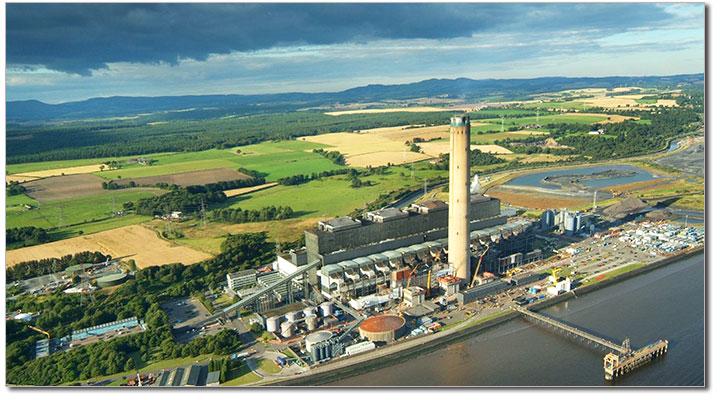ScottishPower has taken the decision not to progress Longannet Power Station in the UK Government’s Capacity Market auction for the delivery of electricity generating capacity for the winter of 2018/19. Given current market conditions, particularly disproportionate transmission charging penalties applicable to the station, the company cannot justify entering the plant into a process which will not come into force for four years and will then only offer 12 months of certainty.
Longannet’s geographic position in Scotland greatly disadvantages the station against other thermal plant located in the south of England, due to the current transmission charging regime. Longannet faces a transmission penalty of £40million per year, solely because of its location.
Neil Clitheroe, CEO Energy Retail and Generation at ScottishPower, said: “We do not want to close Longannet, and I would stress that there are no plans to do so. We have invested over £200 million in recent years to improve both environmental and operational performance at Longannet, and we want to secure a longer term future for the station. However, to avoid closure within the coming years, changes to the plant’s financial situation must be achieved. The current market conditions, predominantly the transmission charging rules, mean that we simply can’t justify entering Longannet into a process which is four years away and will then only offer one year of certainty.
“For many years we have argued that the transmission charging penalties imposed on Longannet are disproportionately high in comparison with other power stations in the south of England, some of which are actually paid a fee to remain connected. The lack of any sensible regional flexibility in the current system penalises generators in Scotland, and discourages investment in new thermal power plants. Simply to reach the 2018 delivery year, Longannet needs to pay over £120 million in transmission penalties. In comparison, if Longannet was located in the London area, the station would receive a fee of £4 million per year to stay connected.
“We of course recognise the changing role of coal in our energy mix, but given that Britain’s generating reserve margin could fall to as little as 2% in 2015, it is important that the transition to low carbon generation is managed correctly and changing regulation doesn’t force major generating plant to close prematurely.
“Our aim now is to fully explore all of the options to keep Longannet operational for as long as possible, and we plan to have detailed discussions with National Grid, The Scottish Government and DECC in the coming months.”

ScottishPower has prequalified its existing gas and hydro plant in the Capacity Mechanism, as well a new proposed gas-fired power station at Damhead Creek in Kent. In total the company has entered over 3,500 megawatts (MW) of generation capacity.
Longannet Power Station has a generating capacity of approximately 2,400 MW and is the largest power station in Scotland, providing on average 10 terawatt hours (TWh) of electricity per year – enough to power over 2 million homes.
Notes to Editors:
- The current Transmission Charging mechanism is linked to the electricity generator’s distance from the main centres of electricity demand and generation. The charges applied against a power station to access the main grid network become increasingly higher based on the distance that the station is located from the UK’s most densely populated areas in London and the South East.
- Longannet Power Station is located in Kincardine-on-Forth, Fife, and covers an area of 89 hectares (220 acres). It has four 600 megawatt (MW) turbine-generators.
- The plant was originally commissioned and opened between 1969 and 1973.
- The station burns a range of coal from around the world including Scottish open-cast coal, and typically requires approximately 4 million tonnes of coal per year.
- Longannet employs approximately 260 full-time staff, and is supported by several key suppliers who provide services such as coal and ash handling, as well as boiler/mechanical/electrical maintenance.
- The station chimney is 183 metres tall, and is the tallest free-standing structure in Scotland following the 2013 demolition of the chimney at Inverkip Power Station (236m).